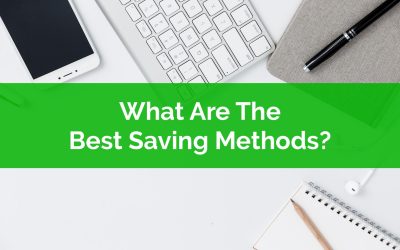Congratulations! You’re on the waitlist!
We will e-mail you before the bootcamp launches for an exclusive preview.
Check out our latest blog posts…
ELI5: What Is A TFSA? The TFSA Explained To A 5-Year Old
The Tax-Free-Savings-Account (TFSA) is a great way to save and invest for the future. In our opinion, it’s the best tax advantaged account in Canada, and probably the first tax advantaged account most people should use (versus an RRSP or RESP). But with all the rules it can be very misunderstood.
To get the most out of your TFSA you have to have a good idea of how it works, what the benefits are, and what the limitations are.
The Canadian government introduced TFSAs in 2009 as an incentive to help any Canadians 18 years or older save more money. Although called a “Tax Free Savings Account”, the TFSA is more than an average savings account.
Even though the TFSA has been around for 10+ years, there is still a lot of confusion about how TFSAs work and what the benefits are.
In this post we’ll do an ELI5 for the TFSA (ELI5 = explain it like i’m 5-years old) and share some of the important considerations when using a TFSA.
Should You Take The Commuted Value Of A Pension?
Defined benefit pensions are often an enormous advantage when it comes to retirement planning but there are also some very complex decisions that need to be made. One of those decisions could be whether or not you should take the commuted value of a pension.
The commuted value represents the lump-sum value of a defined benefit pension… it is the amount that the actuary feels your pension is worth in today’s dollars… and it can be very very large.
A reasonable defined benefit pension could have a commuted value worth $250,000+, or $500,000+, or even $1,000,000+
Seeing all those zeros can be very enticing. This can cause many people to consider taking the commuted value rather than the lifetime retirement benefit offered by a defined benefit pension.
But should you take the commuted value of a pension? There are often many things to consider when deciding to take the commuted value of a pension and the size of the commuted value itself is one just one piece of the puzzle.
Let’s take a look at a few of the factors that you may want to consider, but first, what is a commuted value exactly?
What Are The Best Saving Methods?
This is the time of year when personal finances are always top of mind. Whether that be spending or saving… many of us are looking to make improvements to our personal finances.
Often spending and saving go hand in hand. A reduction in spending can mean more money for savings each month. A new savings method can mean it’s easier to avoid excess spending.
It doesn’t matter what age you are, or what stage of your personal finance journey you’re in, it’s often helpful to review spending and saving on a regular basis. Even for those of us who are natural budgeters, it can still be helpful to review spending and saving from time to time to ensure we stay on track. This type of regular “check in” can be very beneficial over the long-term.
There are some common saving methods that we feel are best practices. They make saving money easier to do. These strategies may not work for everyone but they are some of the best saving methods we’ve come across.
In this post we’ll cover a few of the best methods for saving money on a regular basis.



